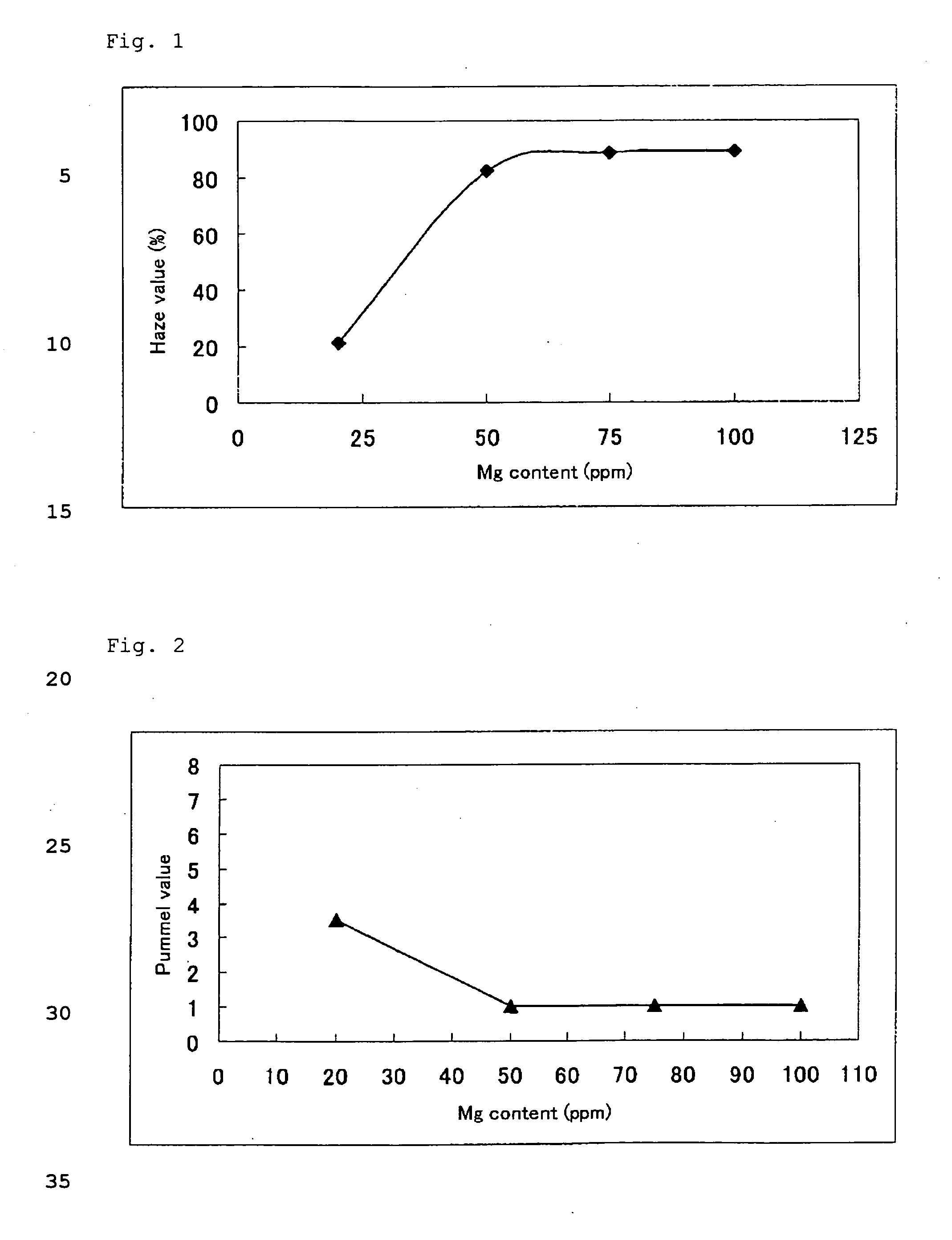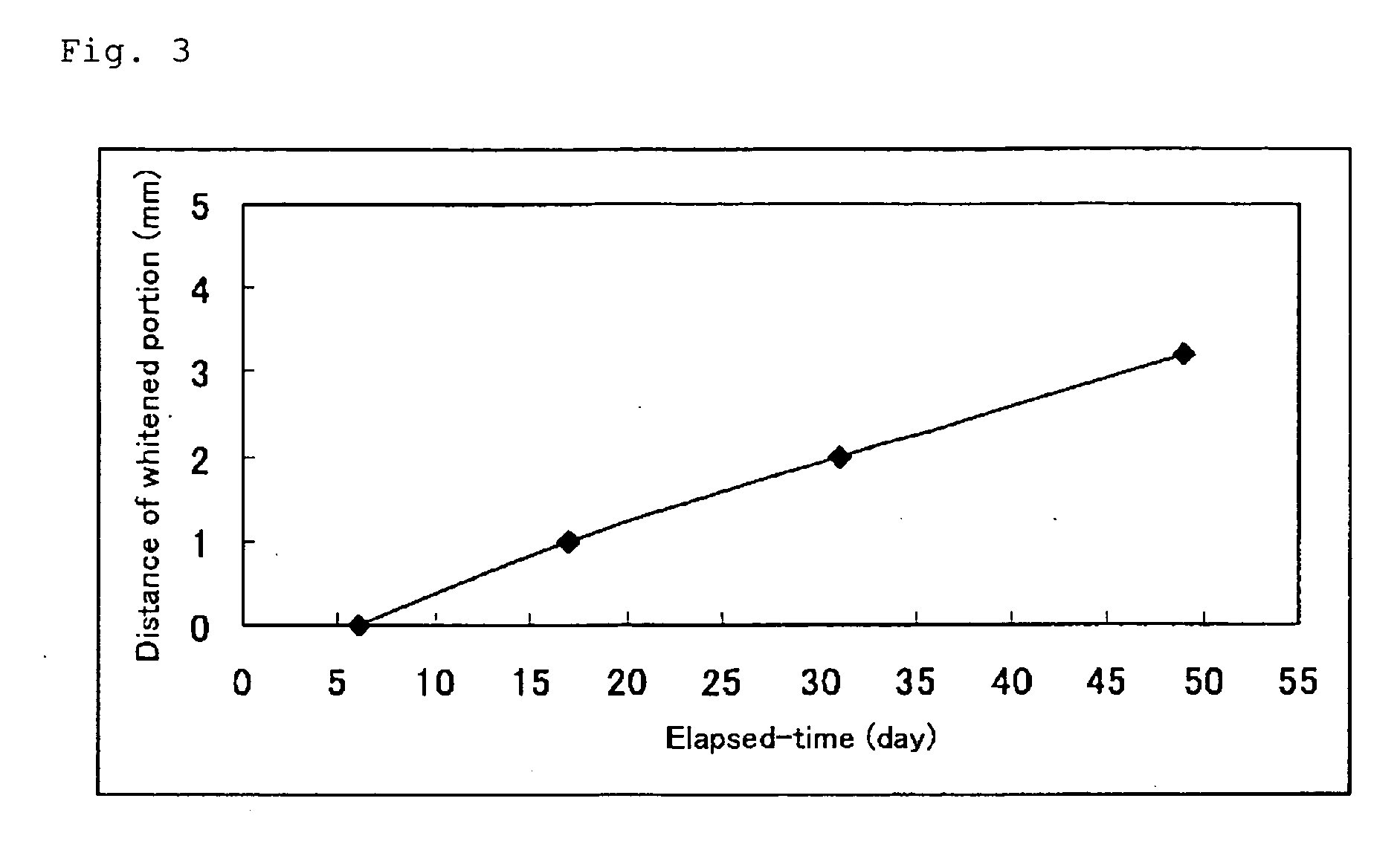Interlayer film for laminated glass and laminated glass
a technology of laminated glass and interlayer film, which is applied in the direction of windows, transportation and packaging, coatings, etc., to achieve the effect of excellent penetration resistan
- Summary
- Abstract
- Description
- Claims
- Application Information
AI Technical Summary
Benefits of technology
Problems solved by technology
Method used
Image
Examples
experimental example 1
(1) Synthesis of Matrix Resin
[0053] 275 parts by weight of polyvinyl alcohol having an average polymerization degree of 1700 and a saponification degree of 99.2 mol % was added to 2890 parts by weight of pure water and the mixture was dissolved by heating. A temperature of this reaction system was adjusted to 15° C., and to this solution, 201 parts by weight of a 35 weight % hydrochloric acid and 157 parts by weight of n-butyl aldehyde were added, and a temperature of this mixture was kept at this temperature to precipitate a reactant. Then, the reaction system was kept at 60° C. for 3 hours to complete the reaction. Then, the reaction system was cleaned with excessive water to wash out unreacted n-butyl aldehyde, and the hydrochloric acid catalyst was neutralized with an aqueous solution of sodium hydroxide, a general neutralizer, and further the reaction system was washed for 2 hours with excessive water and dried to obtain a polyvinyl butyral resin in white powder form. An aver...
experimental example 2
[0057] An interlayer film for a laminated glass and a laminated glass were produced by following the same procedure as in Experimental Example 1 except for adjusting the content of magnesium to 35 ppm and the content of alkali metal to 79 ppm by adding magnesium heptanoate and potassium nonanoate.
experimental example 3
[0058] An interlayer film for a laminated glass and a laminated glass were produced by following the same procedure as in Experimental Example 1 except for adjusting the content of magnesium to 50 ppm and the content of alkali metal to 113 ppm by adding magnesium heptanoate and potassium nonanoate.
PUM
| Property | Measurement | Unit |
|---|---|---|
| thickness | aaaaa | aaaaa |
| thickness | aaaaa | aaaaa |
| temperature | aaaaa | aaaaa |
Abstract
Description
Claims
Application Information
 Login to View More
Login to View More - R&D
- Intellectual Property
- Life Sciences
- Materials
- Tech Scout
- Unparalleled Data Quality
- Higher Quality Content
- 60% Fewer Hallucinations
Browse by: Latest US Patents, China's latest patents, Technical Efficacy Thesaurus, Application Domain, Technology Topic, Popular Technical Reports.
© 2025 PatSnap. All rights reserved.Legal|Privacy policy|Modern Slavery Act Transparency Statement|Sitemap|About US| Contact US: help@patsnap.com


